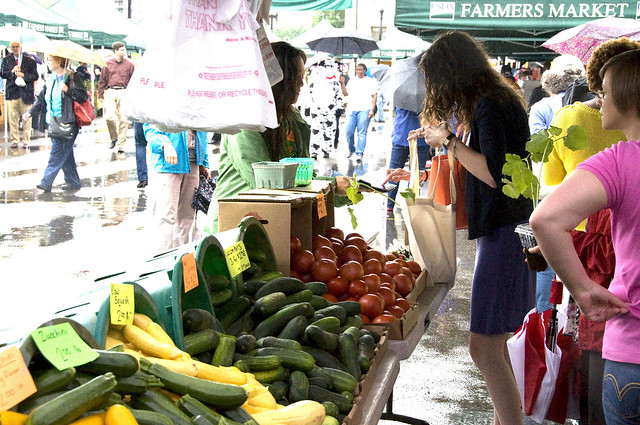
(Note: Oct. 16 is World Food Day, when 150 countries around the world show their support of the United Nations’ Food and Agriculture Organization’s mission to raise awareness and help to end world hunger. The following article features one USDA-supported program that helps bring healthful food to low-income Americans.)
Many reports show that incentivizing the purchase of fruits and vegetables at farmers markets is a wise investment, one that addresses health and food security while also delivering a substantive, economic impact for farmers and farming communities.
Market Match offers a dollar-for-dollar match (up to, on average, $10) to shoppers who participate in SNAP, the Supplemental Nutrition Assistance Program. “The program empowers low-income shoppers to make healthy food choices by overcoming financial barriers,” said Carle Brinkman, director of Ecology Center Food and Farming. The Ecology Center, in Berkeley, California, leads the Market Match program, which operates in about 300 locations around the state.
In 2015, USDA’s National Institute of Food and Agriculture awarded the Ecology Center $3.7 million as one of the first Food Insecurity Nutrition Incentive grants. The program’s goals were to motivate low-income shoppers to eat more fresh fruits and vegetables that they purchase at farmers markets. If successful, residents would be healthier and small- and medium-sized family farms would achieve greater financial security.
According to Brinkman, the program has definitely met its goals. “In 2017 alone, the program enabled low-income shoppers to purchase an estimated 9.5 million servings of fresh, farm-direct, fruits and vegetables, putting nearly $4 million into the pockets of California farmers.”
A report from the American Diabetes Association estimates that changes in dietary intake likely to result from Market Match incentives are sufficient to reduce type 2 diabetes by 1.7 percent – which, in California, translates to health care savings of about $469 million per year.
From a rural economic standpoint, program results are similarly dramatic. According to Brinkman, 37 percent of participating farmers reported hiring new employees, expanding their crop acreage, and investing in equipment.
Further, the National Farmers Union Farmer's Share Report states that, in traditional retail environments, only 17.4 cents of every retail dollar goes back to the farmer. Direct marketing allows growers to keep nearly 100 percent of the retail price. Of the farmers surveyed, 74 percent report making more money, and 65 percent report having more customers as a result of Market Match.
Overall, Brinkman said Market Match’s return-on-investment is $3.61 for every $1. “Market Match clearly makes a difference not only for low-income families, but also for California’s independent farmers, and ultimately leads to economic development and health care savings,” she said.
NIFA invests in and advances agricultural research, education, and extension and seeks to make transformative discoveries that solve societal challenges.
